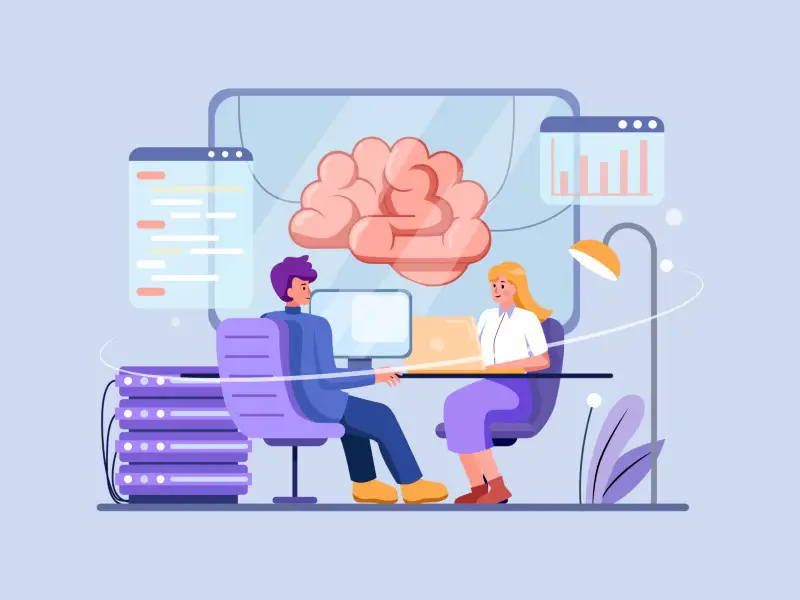Introduction
As the world grapples with the existential crisis of climate change, our technological prowess is being summoned to forge novel solutions. Among various technology-driven initiatives, artificial intelligence (AI) is emerging as a powerful ally in this collective endeavor. Its capability to analyze complex data patterns and predictive modeling has significant implications for our understanding and combatting of climate change.
In this exploration, we delve into the role of artificial intelligence in the fight against climate change. We will unravel how AI is helping us better understand this global phenomenon, devise effective solutions, and even predict future climate scenarios. This deep dive into the intersection of technology and climate science reveals an exciting panorama of possibilities and an urgent call to action.
From climate modeling to sustainable energy, AI’s potential in climate science is as broad as it is profound. But understanding this potential requires us to not only marvel at the technological brilliance of AI but also to appreciate the urgency and complexity of climate change as an issue of our time. This duality is the crux of our exploration.
Artificial Intelligence and Climate Change
Artificial intelligence is playing an increasingly critical role in our efforts to understand and mitigate climate change. By analyzing vast quantities of climate data, AI can identify patterns and trends that might otherwise be overlooked. This analysis can provide valuable insights into the mechanisms of climate change and help scientists develop more accurate predictive models.
Moreover, AI can also aid in the development of strategies to mitigate the impact of climate change. For instance, AI-powered decision support systems can help policymakers identify the most effective measures to reduce greenhouse gas emissions, taking into account a wide range of factors and potential outcomes.
Understanding the Role of AI in Climate Change
Artificial intelligence is like a powerful microscope that allows us to examine the complex, often hidden mechanisms of climate change in unprecedented detail. By processing vast amounts of data and identifying intricate patterns, AI allows us to understand the climate system in a more comprehensive and nuanced manner.
This understanding is critical not only for predicting the future trajectory of climate change but also for developing effective strategies to mitigate its impact. AI algorithms can help identify the most effective ways to reduce greenhouse gas emissions, optimize the use of renewable energy, and enhance the resilience of communities vulnerable to the effects of climate change.
How AI is Contributing to Climate Change Solutions
AI is not only helping us understand climate change but is also actively contributing to solutions. One of the ways it is doing this is by optimizing the use of renewable energy. AI can predict energy demand and adjust the supply accordingly, minimizing the need for fossil fuels. In addition, AI can help design more energy-efficient buildings and transport systems, further reducing our carbon footprint.
Another important contribution of AI is in the area of carbon capture and storage. AI can help identify the best locations for carbon sequestration, optimize the process, and monitor the long-term storage of carbon. This can be a significant step towards achieving our carbon neutrality goals.
A digital Marketing strategy can boost your website traffic. Learn more about Digital Marketing
Artificial Intelligence in Environmental Modelling: A New Perspective
Artificial Intelligence is transforming environmental modeling by providing a new perspective on how we understand and predict climate patterns. Environmental modeling traditionally relies on complex mathematical models to simulate the earth’s climate system. While these models are extremely useful, they have limitations, particularly in terms of their ability to handle highly complex and non-linear processes.
This is where AI comes in. By learning from data, AI can identify complex patterns and interactions that traditional models might miss. For instance, Google’s AI has been used to create a high-resolution climate model that provides more accurate forecasts of rainfall and temperature, significantly improving our ability to predict weather patterns and extreme events. [More on this here.](https://ai.googleblog.com/2020/07/using-machine-learning-to-nowcast.html
In addition to improved accuracy, AI can also significantly speed up climate simulations. Traditionally, climate simulations are computationally intensive and can take a significant amount of time. With AI, however, these simulations can be run much faster, allowing scientists to explore more scenarios and make predictions more quickly. For instance, researchers from the Lawrence Berkeley National Laboratory have developed an AI method that significantly reduces the computational time for climate modeling.
But the potential applications of AI in environmental modeling extend beyond climate change. AI can also be used to model other environmental processes, such as the spread of infectious diseases, the migration of animals, or the growth of forests. This can provide valuable insights for conservation efforts and help us better manage our natural resources.
However, as powerful as AI is, it’s not a magic bullet. It’s essential to remember that the predictions made by AI are only as good as the data they’re based on. Moreover, while AI can identify patterns and make predictions, it doesn’t provide the causal explanations that traditional models do. This is important because understanding the underlying mechanisms of climate change is crucial for developing effective mitigation strategies.
Artificial Intelligence A Modern Approach
Unveiling the ultimate guide to the dynamic world of artificial intelligence – Artificial Intelligence: A Modern Approach, 4th Edition. Revel in the richness of updated content, designed to propel your understanding of AI into the future. This expertly curated edition not only explores, but also breathes life into the extensive realms of AI.
Experience AI like never before, with our expansive coverage on the state-of-the-art technologies. Unify your understanding of AI concepts, enhanced and refined for intuitive learning. Dive deep into machine learning, bask in the intricacies of deep learning, and voyage through the fascinating dimensions of transfer learning.
Explore the grandeur of multiagent systems, and the mesmerising world of robotics. Engage with natural language processing and understand causality, all while navigating the expanse of probabilistic programming. At the core of our new edition is the commitment to responsible AI, with comprehensive discourse on privacy, fairness, and safe AI.
Artificial Intelligence: A Modern Approach, 4th Edition is your passport to the future of AI. Embark on this thrilling journey and discover the limitless possibilities of what you can accomplish with AI.
Artificial Intelligence and Sustainable Energy: A Powerful Duo
The challenges of climate change call for a significant shift towards sustainable energy. AI has emerged as a vital tool in this quest, with potential applications ranging from optimizing renewable energy production to improving energy efficiency.
One of the most promising applications of AI in sustainable energy is in the optimization of renewable energy sources. AI can analyze weather data to predict the output of wind and solar farms, helping to optimize their operation and reduce waste. For example, DeepMind has demonstrated that machine learning algorithms can predict wind power output 36 hours in advance, boosting the value of wind energy by approximately 20%. Read about it here.
AI can also help to design more energy-efficient systems. For instance, AI can analyze energy consumption patterns to identify inefficiencies and suggest improvements. This can be applied to everything from individual households to entire cities. For example, Google has used AI to reduce the energy used for cooling its data centers by 40%. More on this here.
Moreover, AI can play a pivotal role in managing the energy grid. By predicting demand and supply, AI can ensure a stable energy supply, even when relying on intermittent renewable energy sources. For instance, the startup Grid4C uses AI to forecast energy production and consumption, helping utilities balance the grid and prevent blackouts. More information can be found here.
Nevertheless, it’s important to recognize that while AI offers significant potential in promoting sustainable energy, its deployment comes with challenges. These include the high computational cost of AI, the need for high-quality data, and issues related to privacy and security. Addressing these challenges will be crucial to fully harness the power of AI in the fight against climate change.
Which of the following industries commonly requires data entry tasks?
Artificial Intelligence in The Future of Climate Science
The future of AI in climate science looks promising. As our computational capabilities continue to grow and as more and more climate data becomes available, we can expect AI to play an increasingly important role in our understanding and mitigation of climate change.
In the future, we could see AI being used to develop more accurate and detailed climate models, to optimize our use of renewable energy, and to design climate-friendly cities and infrastructure. We could also see AI being used to monitor and predict the effects of climate change
on vulnerable communities, helping us to implement measures to protect them. The deployment of AI could even extend to more direct interventions in the climate system, such as geoengineering.
The development of AI technology in the context of climate science could also lead to new ways of doing research. Traditionally, climate science has been based on the physical and mathematical modeling of the climate system. With AI, however, we could see a shift towards a more data-driven approach, where insights are derived from the analysis of large climate datasets. This could complement traditional methods and provide new insights into the workings of the climate system.
AI could also help democratize climate science by making complex climate models more accessible. For instance, AI could be used to develop user-friendly tools that allow non-scientists to explore climate scenarios and understand their potential impacts. This could foster a broader public understanding of climate change and empower communities to take action.
However, the increasing use of AI in climate science also raises important ethical and societal issues. These include questions about data privacy and security, the transparency and accountability of AI algorithms, and the potential impacts of AI on jobs and inequality. As we move towards a future where AI plays a central role in our response to climate change, it will be essential to address these issues in a thoughtful and inclusive manner.
In conclusion, while the challenges posed by climate change are daunting, the rise of AI provides a ray of hope. By harnessing the power of AI, we can enhance our understanding of climate change, devise effective solutions, and engage a broad range of stakeholders in the fight against this global threat. It’s a green algorithm for a sustainable future.
Webnode makes Content Creation easy
24 / 100 Webnode: Effortlessly Create Stunning Websites for Free with Artificial Intelligence Webnode is revolutionizing the world of website creation, making it accessible and






